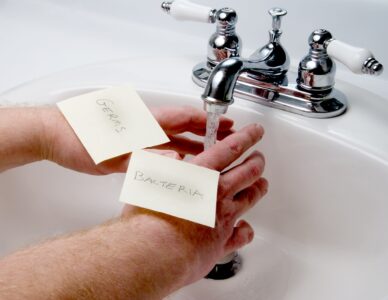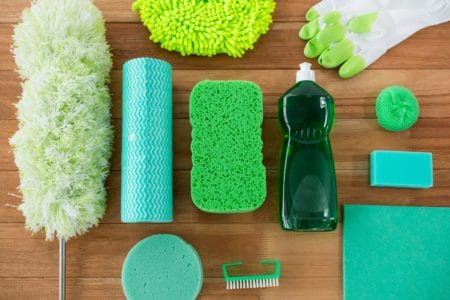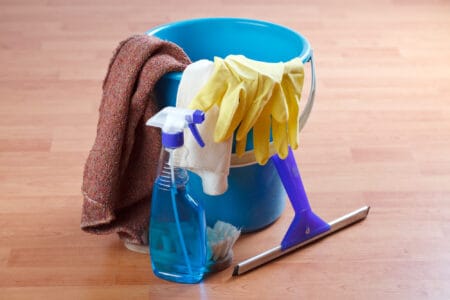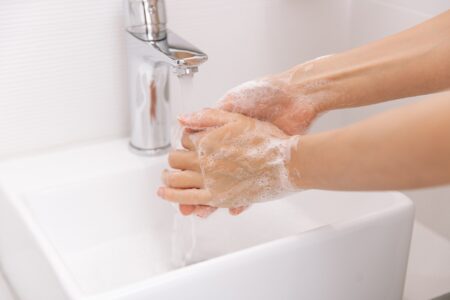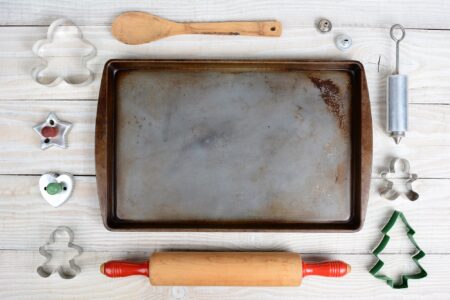You probably already know the basics about germs: they’re tiny microorganisms that can make us sick. They’re microscopic, so much so that we can’t see them. But what else should you know?
Consider this a flash lesson in microbiology. We’ve compiled a list of 15 germs and bacteria facts and statistics that will have you in the know in no time.
We’ll walk you through facts, myths, warnings, and more. Before you know it, you’ll be a germ expert. Keep reading for more information.
15 Key Germs and Bacteria Facts and Statistics
- Not all germs and bacteria are bad. Many help us fight diseases.
- If you have a cold or a virus, antibiotics won’t kill the illness-causing germs.
- There are still germs in swimming pools despite chlorine levels.
- Toilet seats aren’t the germiest place in a home. Your kitchen sponge is much worse.
- Antibacterial soap won’t kill more germs than regular soap.
- Thorough hand washing can prevent illnesses by up to 57 percent.
- Most people have poor hand washing habits. In fact, only about 31 percent of men wash their hands after using a public bathroom.
- We contact around 60,000 germs every day.
- Hand washing with soap and water is more effective than using hand sanitizer.
- Drying your hands can prevent the spreading of germs. Wet hands spread germs more easily.
- Your mouth is home to over six billion bacteria.
- Kissing spreads 80 million bacteria.
- Flushing your toilet can launch bacteria up to five feet in the air.
- There are around 2,000 types of fungus and 7,000 species of bacteria in your home.
- Most shopping carts have traces of fecal bacteria.
Germs Facts and Myths
There are many misconceptions about germs. We’re going to look at some common myths about germs and counteract them with the truth.
- All germs and bacteria are bad: False. Some germs and bacteria, especially those in our bodies, are good. For instance, lactobacillus acidophilus — an intestinal bacteria — helps you digest food and fight diseases. Cool!
- Antibiotics will kill germs: Don’t ask your pharmacist for antibiotics when you’re sick with a cold. Colds are caused by viruses, and viruses don’t respond to antibiotics.
- Chlorine kills germs: False. When you go to a swimming pool, it’s probably quite sanitary. But keep in mind that chlorine doesn’t kill all germs in the pool. Plus, the chlorine levels aren’t always perfect, which allows germs a chance to thrive.
- Toilet seats are the germiest place: Not true. Your phone, kitchen sponge, and doorknobs are most likely dirtier.
- Antibacterial soap is the best for killing germs: Not necessarily. You can opt for a plain bar of soap or liquid soap, and they will do just as well. As long as you wash your hands properly for at least 20 seconds using soap, you will wash away the germs on your skin. Antibacterial soap is pretty harsh on your skin, so if you want to switch to something more moisturizing, go for it.
Hand Washing Statistics
Washing your hands is the best way to prevent illnesses. When you wash your hands, you remove germs responsible for colds, stomach bugs, and other harmful diseases. Let’s look at some more important information about hand washing.
- Hand washing prevents illness: As mentioned, hand washing can stop the spread of diseases. It can prevent diarrhea sickness by 40 percent, respiratory illnesses by 21 percent, and absenteeism caused by gastrointestinal sickness in schoolchildren by 57 percent (1).
- Bad hand washing habits: Despite all the benefits of hand washing, many people have poor habits. In the US, only around 58 percent of people always use soap to wash their hands after going to the bathroom at home (2). In healthcare settings, it was found that workers clean their hands less than half as often as suggested (3). A final fun fact: 65 percent of women wash their hands after using a public bathroom versus 31 percent of men (4).
- Our hands touch a lot of germs: Every day, we carry 3,200 different germs on our hands (5). If that doesn’t make you want to scrub your hands aggressively for 20 seconds, we don’t know what will.
- Hand washing is better than hand sanitizer: Hand sanitizer kills most bacteria, but it doesn’t clean them or remove dirt. Plus, hand washing is overall more efficient and will remove more germs.
- Wash your hands, but also dry them: Drying your hands is almost as important as washing them (6). Wet hands spread more germs with more ease. Use a paper towel, hand dryer, or normal towel after washing your hands.
Scary Germ Facts
Are you ready for some spooky microorganisms facts and statistics? They might not cause a jumpscare, but they could leave you with an eerie feeling.
- Your mouth isn’t clean: Even if you’ve brushed, flossed, swirled mouthwash, and scrubbed your tongue clean — it’s still full of germs (7). There are over six billion bacteria and 700 different species in your mouth. Not all this is bad, but it’s also why you should brush twice daily.
- Kissing spreads millions of bacteria: This interesting fact might take the romance out of kissing. But guess what? A kiss can spread 80 million bacteria between two people (8).
- Flushing your toilet spreads germs: When you flush your toilet, close the lid. Otherwise, droplets, germs, and bacteria launch up to five feet for over 20 seconds (9)! These droplets can land on surfaces and become an infection risk.
- There are thousands of germ species in your home: Your home is a breeding ground for germs. A study found that the average American house has more than 2,000 species of fungus and 7,000 species of bacteria (10). One thing that showed a significant difference in the bacteria makeup of a home was having pets. The good news is: most of the microorganisms found were harmless.
- Most shopping carts host fecal matter: This gross fact might make you panic. But here goes: around 72 percent of shopping carts have traces of fecal bacteria (11). Next time you walk into your nearest supermarket and are offered a chance to sanitize the cart, take it.
FAQs
Germs Are Everywhere
Germs are tiny microorganisms that can cause illness, but many can help fight diseases. Only around one percent of bacteria are harmful. Either way, it’s important to practice good hand hygiene. Hand washing can prevent diarrhea sickness by 40 percent. We contact around 60,000 germs a day, so it’s essential to scrub our hands for 20 seconds every time.
These germs and bacteria facts and stats show us that germs and pathogens are hanging around no matter where you go or what you touch. But that’s not necessarily a bad thing. Only around one percent of bacteria are harmful.
Keep your house clean. Disinfect your surfaces. Wash your hands often and well. Make sure you dry them, too.
Good personal hygiene and hand washing is the best way to reduce the spreading and picking up illnesses. If you do develop a sickness, make sure to contact your doctor. If bacteria caused it, there’s a good chance antibiotics will help.
